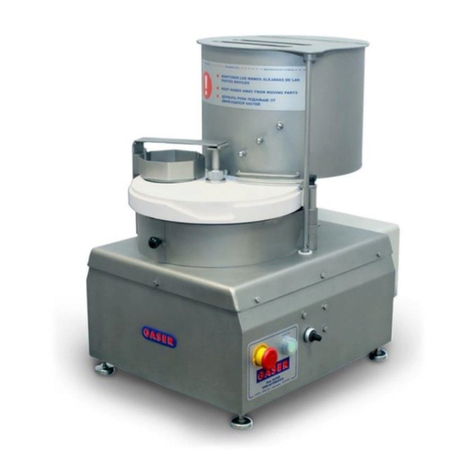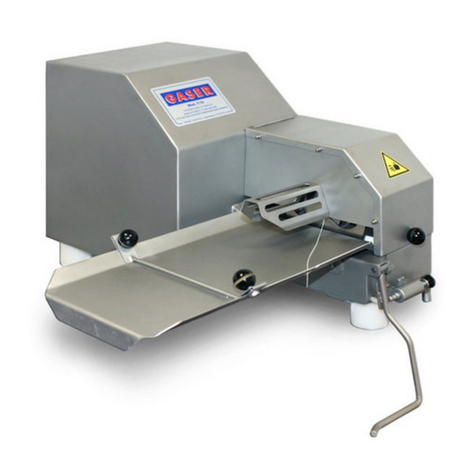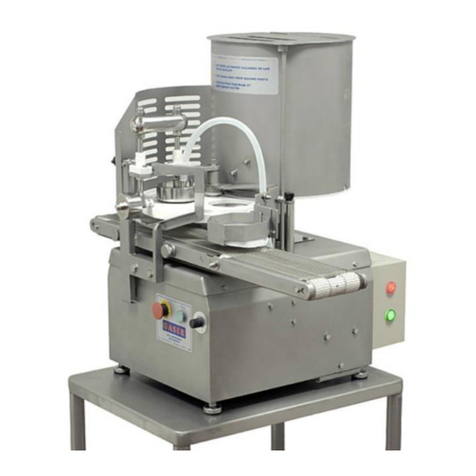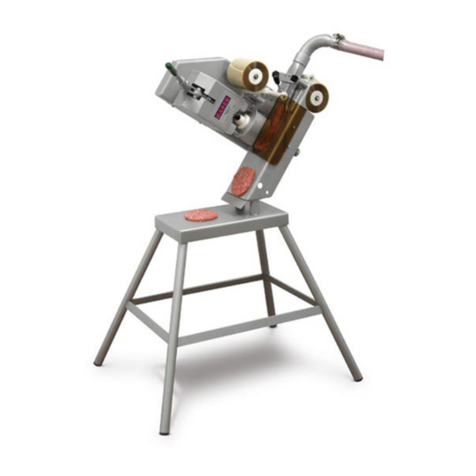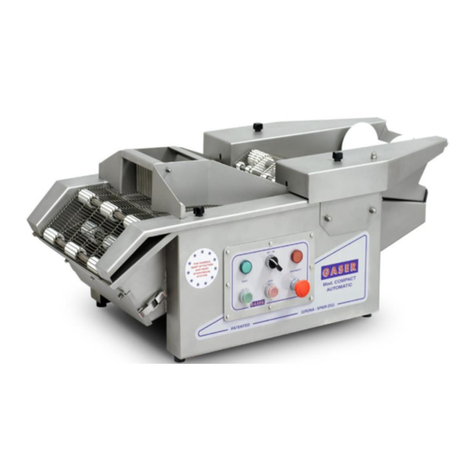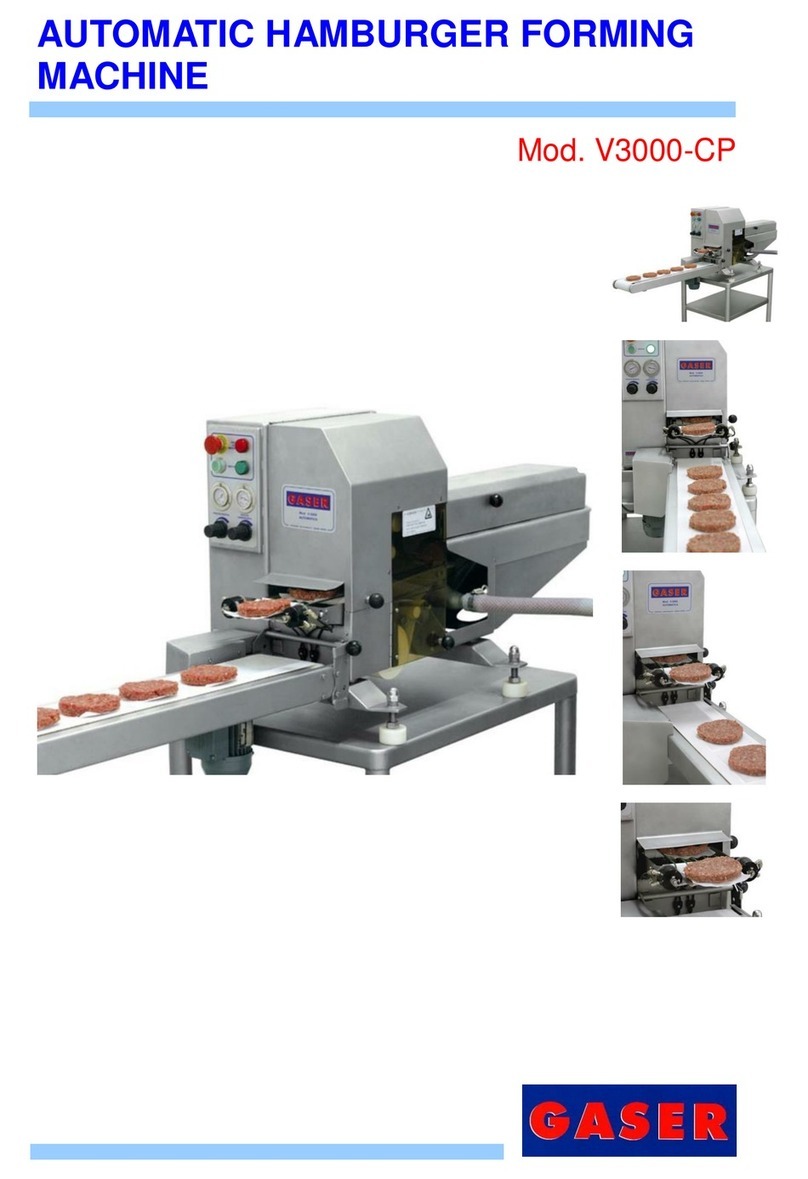-2-
INDEX
1. INDUSTRIAS GASER............................................................................................4
2. EC DECLARATION OF CONFORMITY .................................................................5
3. HYGIENE CERTIFICATE.......................................................................................6
4. INTRODUCTION....................................................................................................7
4.1 Safety...............................................................................................................7
4.2 Hygiene............................................................................................................7
5. TECHNICAL SPECIFICATIONS.............................................................................8
6. RECEIPT AND START-UP.....................................................................................9
6.1 Receipt.............................................................................................................9
6.2 Assembly..........................................................................................................9
6.3 Start-up ..........................................................................................................11
6.4 Notes .............................................................................................................12
7. CLEANING...........................................................................................................13
8. MAINTENANCE...................................................................................................16
9. TROUBLESHOOTING .........................................................................................17
10. GENERAL DIAGRAM.........................................................................................18
10.1 Overview.....................................................................................................18
10.2 Overview complete breading belt drive shaft................................................23
10.2.1 Overview complete breading belt drive gears........................................24
10.3 Overview batter belt drive shaft....................................................................25
10.3.1 Overview batter belt drive gears............................................................26
10.4 Overview complete breading belt bearing housing.......................................27
10.5 Overview complete batter belt bearing housing............................................28
10.6 Overview complete breading belt passive rollers..........................................29

















